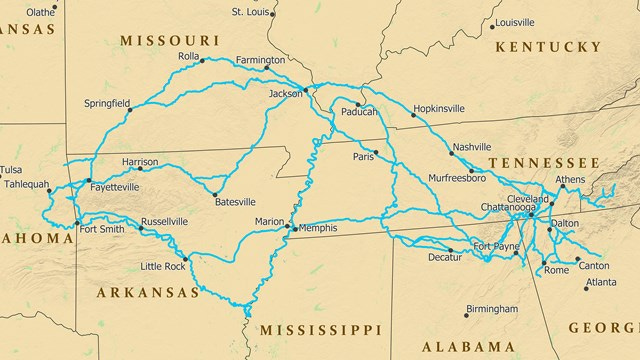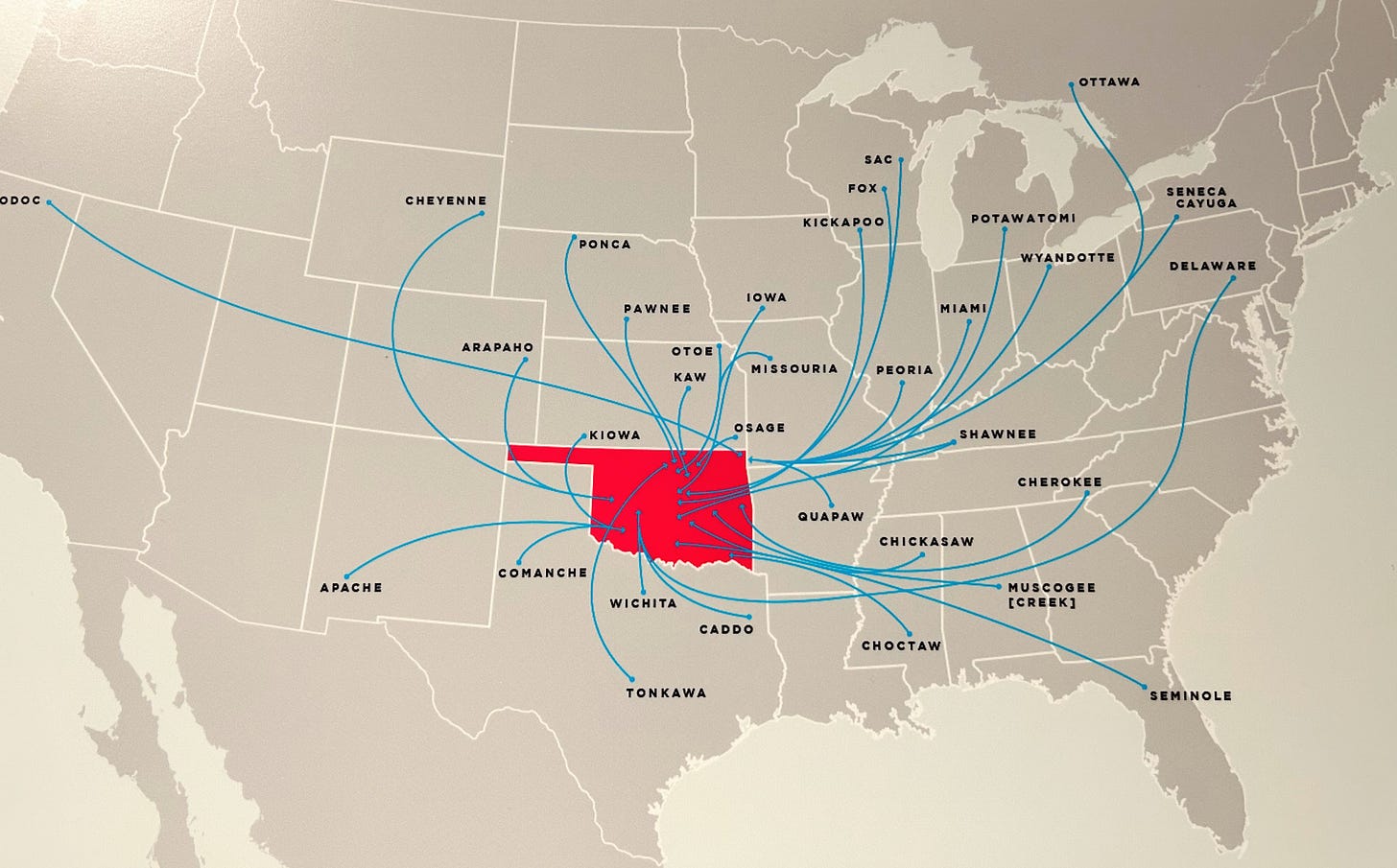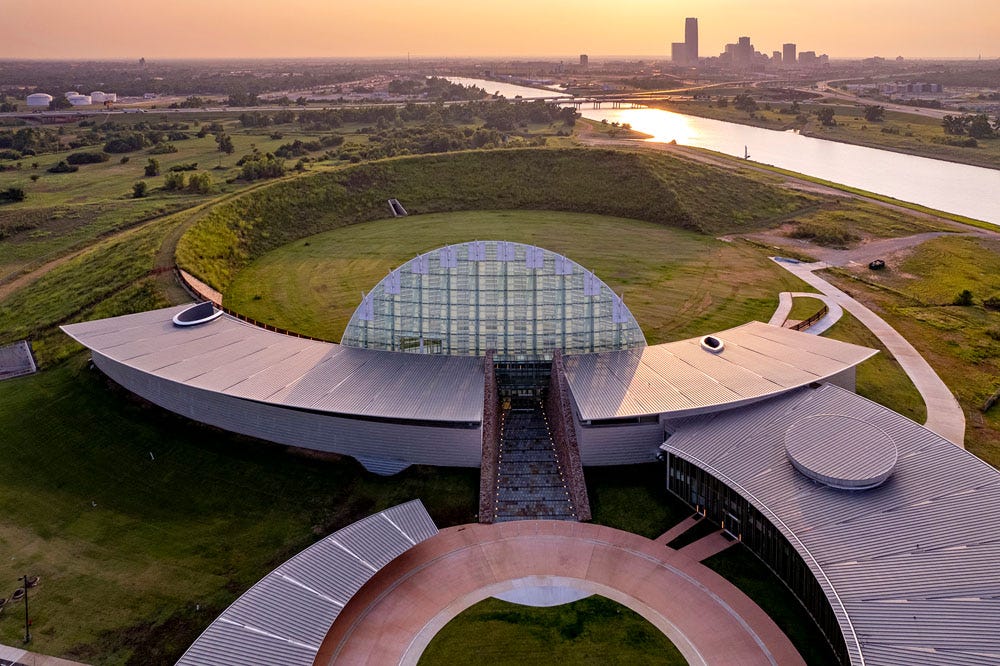Learning First American history, from First Americans, at new Oklahoma City cultural center
The First Americans Museum, 30 years in the making, features an all-Native curatorial staff, a 90-foot mound and a rectifying walk through history.

Before the arrival of Europeans to what is now called North American, there were as many as 18 million people living here.
By 1800, that number was closer to 1 million.
By 1907, when Oklahoma became a state, just 300,000 Indigenous people remained.
This is one of many stark realities that are too easy for settler Americans like me to forget as we fumble for the right words to describe the people who were here before us.
This is why visiting the First Americans Museum in Oklahoma City is an experience that all Americans should have.
And it starts with the name.
Called the American Indian Cultural Center and Museum during its 30-year development, the museum opened in 2021 with a new name: the First Americans Museum, a powerful statement about its sweeping, honorable mission: to present the history of the people who were here first, with the reverence we give anything deemed “first.”
Growing up an hour from the Oklahoma-Missouri border, I was generally aware of Oklahoma’s Indigenous history, but I never put the pieces together about why my little hometown had a brown Trail of Tears marker on the highway outside of town or where that trail was headed.

A primer about why Oklahoma is home to so many Indigenous people: As part of the Indian Removal Act of 1830, the territory of Oklahoma had been designated as a place where 125,000 Indigenous people would be resettled. (Of course, Euro-American settlers came anyway. This is why the Oklahoma University’s mascot is the “Sooner,” the speculators who led the rush to take that land as their own.)
To move these tribes, the government forced Muscogee, Cherokee, Choctaw, Chickasaw, and Seminole people along what is now known as the Trail of Tears between 1830 and 1850.
The northern route, where a third of the Cherokee travelers who were forced on this journey died along the way, went through Nashville and then down through the corner of Missouri where I lived as a child.

That’s why today, there are 39 tribal nations located in Oklahoma, even though many of these tribes have only been in Oklahoma for less than 200 years.
When all 39 of those tribal nations were planning to build the one of the largest Native history museums in the country on the banks of the North Canadian River, they decided to orient the building to include a mound inspired by the historic mounds found throughout the eastern half of the U.S.

Thanks to some impressive engineering work, the mound itself is incorporated into the museum, creating an almost complete circle with a large circular center in between the 90-foot grassy mound and the 175,000-square-foot museum complex, whose design intentionally did not include any right angles.
Keep reading with a 7-day free trial
Subscribe to The Feminist Kitchen to keep reading this post and get 7 days of free access to the full post archives.


